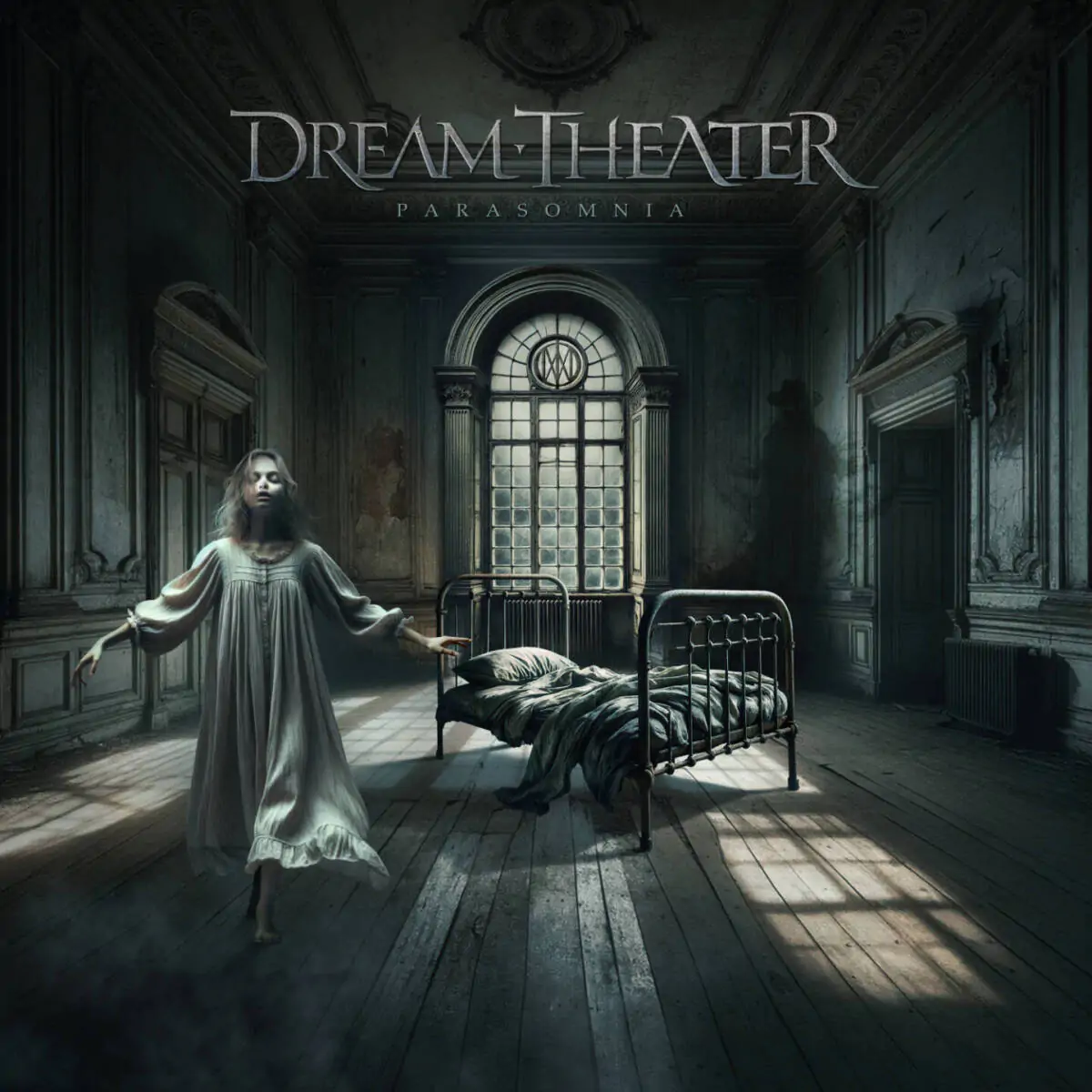Parasomnia - Dream Theater | Album Review

Overview
| Band | Dream Theater |
|---|---|
| Origin | United States |
| Genre | Progressive Metal |
| Release Date | Fabruary 7th, 2025 |
| Label | Inside Out |
Personnel
- John Petrucci - Guitar, Vocals (backing)
- John Myung - Bass
- Mike Portnoy - Drums, Vocals (backing)
- James LaBrie - Lead Vocals
- Jordan Rudess - Keyboards
Review
Version en Español
Si alguna banda hizo temblar internet el año pasado, fue Dream Theater, con el regreso del miembro fundador Mike Portnoy a la batería después de casi 15 años de ausencia, y el lanzamiento de un nuevo álbum. Todos sabemos lo popular y reconocido que es Mike en la escena progresiva, con más de 10 proyectos exitosos como Transatlantic, Flying Colors y Neal Morse, por nombrar solo algunos. Nuestras expectativas estaban por las nubes desde el principio.
No todos los días me toca revisar un álbum de una banda con la que tengo tanta historia, desde mis días de la escuela, disfrutando de clásicos como Images & Words y Awake, hasta Octavarium y Systematic Chaos. Debo admitir que no soy un gran fan de la era Mangini, quien reemplazó a Mike Portnoy durante esos 15 años, y para mí, desde Octavarium, Dream Theater no ha entregado consistentemente la calidad de música que disfruté en sus inicios. Sin embargo, ocasionalmente producen joyas como The Astonishing, que, a pesar de su recepción mixta, considero uno de los mejores álbumes de rock progresivo de la última década.
Todo esto es para poner en contexto la revisión de un nuevo álbum de lo que muchos consideran la mejor formación de Dream Theater, desde la perspectiva de alguien que ha criticado y elogiado el arte de la banda.
Parasomnia es un álbum conceptual temático oscuro que explora trastornos del sueño y relatos de la vida real de experiencias nocturnas inquietantes. Recurre a ideas musicales de álbumes anteriores, casi como un tributo de aniversario. El tema de apertura, "In the Arms of Morpheus", regresa el concepto de obertura, que recuerda a Scenes from a Memory o Six Degrees of Inner Turbulence, estableciendo el tono oscuro del álbum y las sonoridades menores. Varios motivos de esta pista reaparecen a lo largo del álbum. Es un comienzo técnicamente impresionante y ominoso, que muestra la ejecución y la diversidad compositiva de la banda.
El primer single, "Night Terror", aunque técnicamente competente, se sintió algo predecible para una banda de este calibre. Depende en gran medida de conceptos musicales familiares de álbumes pasados, como los patrones de toms de Portnoy, el doble bombo y los efectos vocales de Labrie. Aparte del solo de guitarra final, no ofrece mucho nuevo. El segundo single, "A Broken Man", escrito por Labrie, describe las pesadillas de guerra de un veterano. La canción comienza con una introducción tensa y progresiva que se alinea bien con su tema. Sin embargo, rápidamente pierde impulso, con la dependencia excesiva de Labrie en los efectos vocales volviéndose distractora. La sección de solo instrumental presenta algunos pasajes de teclado interesantes, dándole más protagonismo a Jordan Rudess.
"Dead Asleep", la primera pista más larga, revisita motivos de "A Broken Man" y la obertura a un tempo más lento. Los riffs recuerdan a Train of Thought y la era Awake, lo cual es bueno, pero nuevamente, predecible. El tercer sencillo, "Midnight Messiah", mi favorito personal, presenta una intrigante introducción de guitarra arpegiada y un coro pegadizo con transiciones dinámicas de doble bombo.
Las últimas tres pistas comienzan con la breve y atmosférica "Are We Dreaming?", con campanas y voces de fondo. Esto lleva a "Bend the Clock", una canción impulsada por la guitarra sorprendentemente efectiva, más simple y tradicional, lo que demuestra que Dream Theater no siempre necesita complejidad para sobresalir. Es una pieza edificante y emotiva. El álbum cierra con "The Shadow Man Incident", una épica de 19 minutos, un formato común en Dream Theater. Si bien evoca Odyssey de Symphony X con sus elementos orquestales y épicos, rápidamente se vuelve tediosa. A pesar de su complejidad técnica, carece de la chispa de las épicas pasadas de Dream Theater.
En resumen, Parasomnia, con su concepto convincente y momentos musicales ocasionales destacados, sufre de una repetición excesiva de ideas familiares de Dream Theater. Es un álbum promedio que no cumple con las expectativas que rodean el regreso de Mike Portnoy. Sin embargo, la musicalidad de la banda es innegable, y sigo teniendo esperanzas de trabajos más innovadores en el futuro.
If any band broke the internet last year, it was Dream Theater, with the reunion of founder member Mike Portnoy on drums after nearly 15 years away, and the release of a new album. We all know how popular and well-regarded Mike is in the progressive scene, with 10+ successful projects like Transatlantic, Flying Colors, and Neal Morse, to name just a few. Our expectations were sky-high from the start.
It's not every day that I review an album from a band with whom I have such a long history, dating back to my high school days, enjoying classics like Images & Words and Awake, up to Octavarium and Systematic Chaos. I must admit I'm not a huge fan of the Mangini era, the one that replaced Mike Portnoy for those 15 years, and for me, since Octavarium, Dream Theater hasn't consistently delivered the quality of music I enjoyed in their early career. However, they occasionally produce gems like The Astonishing, which, despite its mixed reception, I consider one of the best progressive rock albums of the last decade.
All this is to set the context for reviewing a new album from what many consider the best Dream Theater lineup, from someone who has both criticized and praised the band's artistry.
Parasomnia is a dark, thematic concept album exploring sleep disorders and real-life accounts of unsettling nocturnal experiences. It draws on musical ideas from previous albums, almost like an anniversary tribute. The opening track, "In the Arms of Morpheus," revisits the overture concept, reminiscent of Scenes from a Memory or Six Degrees of Inner Turbulence, establishing the album's dark tone and minor sonorities. Several motifs from this track reappear throughout the album. It's a technically impressive and ominous start, showcasing the band's execution and compositional diversity.
The first single, "Night Terror," while technically proficient, felt somewhat predictable for a band of this caliber. It relies heavily on familiar musical tropes from past albums, like Portnoy's tom patterns, double bass, and Labrie's vocal effects. Aside from the final guitar solo, it doesn't offer much new. The second single, "A Broken Man," written by Labrie, depicts a veteran's war-induced nightmares. The song begins with a tense, prog-infused introduction that aligns well with its subject matter. However, it quickly loses momentum, with Labrie's over-reliance on vocal effects becoming distracting. The instrumental solo section features some interesting keyboard passages, giving Jordan Rudess more prominence.
"Dead Asleep," the first longer track, revisits motifs from "A Broken Man" and the overture at a slower tempo. The riffs recall Train of Thought and the Awake era, which is good, but again, predictable. The third single, "Midnight Messiah," my personal favorite, features an intriguing arpeggiated guitar intro and a catchy chorus with dynamic double bass transitions.
The final three tracks begin with the brief, atmospheric "Are We Dreaming?", featuring bells and background vocals. This leads into "Bend the Clock," a surprisingly effective, simpler, and more traditional guitar-driven song, proving that Dream Theater doesn't always need complexity to excel. It's an uplifting and emotive piece. The album closes with "The Shadow Man Incident," a 19-minute epic, a common Dream Theater format. While it evokes Symphony X's Odyssey with its orchestral and epic elements, it quickly becomes tedious. Despite its technical complexity, it lacks the spark of Dream Theater's past epics.
In summary, Parasomnia, with its compelling concept and occasional musical highlights, suffers from excessive repetition of familiar Dream Theater tropes. It's an average album that doesn't quite live up to the hype surrounding Mike Portnoy's return. Nevertheless, the band's musicianship is undeniable, and I remain hopeful for more innovative work in the future.
Final Scoring
Track List (Spotify Version)
- In the Arms of Morpheus [5:22]
- Night Terror [9:55]
- A Broken Man [8:29]
- Dead Asleep [11:06]
- Midnight Messiah [7:58]
- Are We Dreaming? [1:28]
- Bend the Clock [7:24]
- The Shadow Man Incident [19:32]
